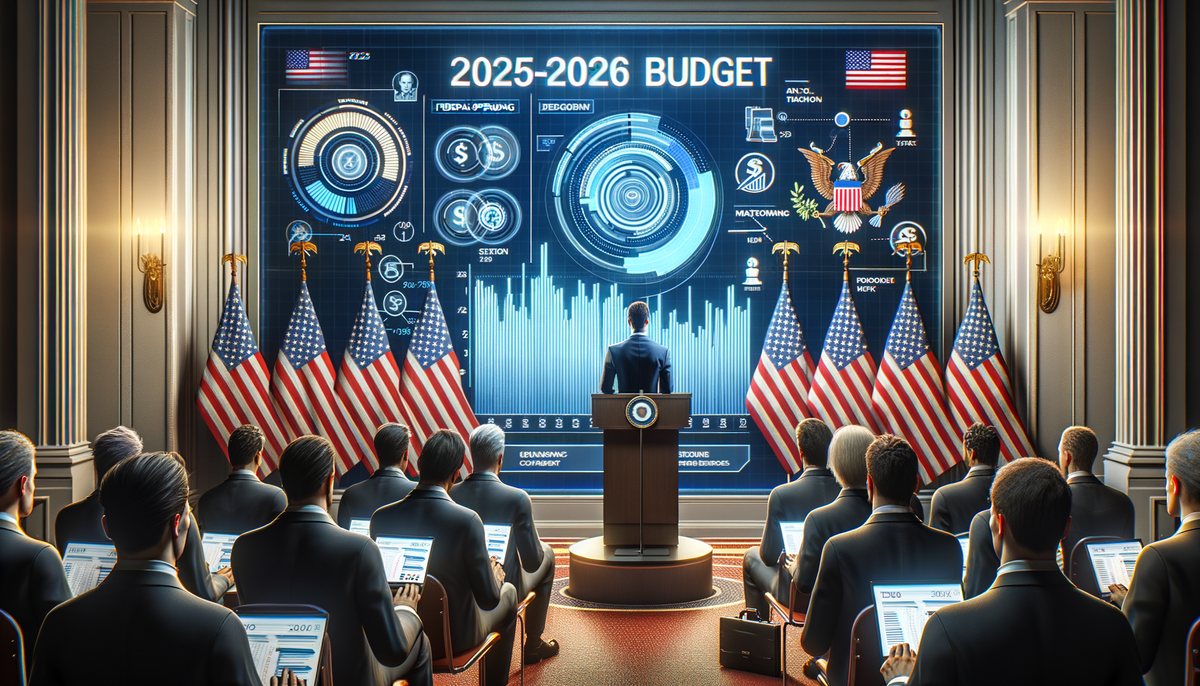Trump Budget: Major Changes in Federal Spending and Policy for 2025-2026
Explore the significant changes in Trump's 2025-2026 budget and its impact on federal spending, tax policies, and economic growth.

Trump Budget: Major Changes in Federal Spending and Policy for 2025-2026
The recent Trump budget proposals for the fiscal years 2025 and 2026 represent significant shifts in federal policy, aligning with the administration's priorities. Key elements include deep tax cuts, drastic changes to social program funding, and substantial increases in defense and border security spending.
Overview of the Trump Budget Proposals (2025–2026)
The proposed budget calls for a $163 billion reduction in federal discretionary spending, which marks a 22.6% decrease from the current year. These cuts are primarily directed at the Departments of Education, Health and Human Services, the Environmental Protection Agency (EPA), and USAID, while maintaining funding levels for homeland security, veterans, seniors, law enforcement, and infrastructure.
On the defense front, the budget proposes a 13% spending increase, taking the total to $1.01 trillion for 2026. Also included is $175 billion for southern border security initiatives.
Tax Policy Priorities
Key tax policy measures include:
- Permanent extension of the 2017 tax cuts
- No taxes on tipped income, overtime pay, and Social Security benefits for retirees
- New deductions for auto loan interest on American-made cars
- Removal of the state and local tax (SALT) deduction cap
- Changes to the treatment of carried interest
- New tariffs on U.S. imports for additional revenue
These changes aim to extend and expand the 2017 Tax Cuts and Jobs Act provisions which are nearing expiration.
Fiscal Impact and Economic Effects
Despite the intended economic growth, the tax cuts would reduce federal tax revenue by $4.5 trillion from 2025 to 2034. Although projections indicate a 1.1% increase in GDP, only 16% of the lost revenue is expected to be offset by such growth. More modest gains are anticipated in U.S. income (GNP), projected to rise by 0.4%.
Political and Policy Reactions
Supporters argue that the proposals offer much-needed tax relief to working families and prioritize national defense and security investments. Critics, however, highlight the disproportionate impact on programs vital to working Americans, arguing that the budget channels extensive tax breaks to the wealthy and introduces tariffs that could increase costs for the middle class.
Practical Takeaways for Budget Professionals
For professionals in the budget and fiscal policy sector, understanding these shifts is crucial. Anticipate how the budget reconciliation process might affect legislative timelines and prepare for the reallocations in federal funding. Those engaged in affected sectors such as education, health, and environmental agencies should strategize on advocacy and partnership approaches to mitigate funding impacts.
For consultants in AI and tech sectors, emphasize potential opportunities through increased security and infrastructure investments. Utilizing AI-powered analytics to predict economic impacts and advise on compliance with new tax policies could be a valuable service to offer.
Conclusion
The 2025-2026 Trump budget proposals reflect a stark policy pivot favoring reduced federal agency spending, persistent tax cuts, and prioritized defense spending. While they promise modest economic growth, the broader implications—particularly regarding the swelling federal deficit—will drive extensive political debate and require strategic planning from all sectors impacted. For further reading, reference the detailed coverage provided by The New York Times, U.S. News, and Politico.
Call to Action
Stay informed on the evolving landscape of federal budgets and policies. Consider consulting with our experts to explore how these changes might impact your business or sector.




